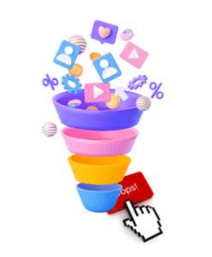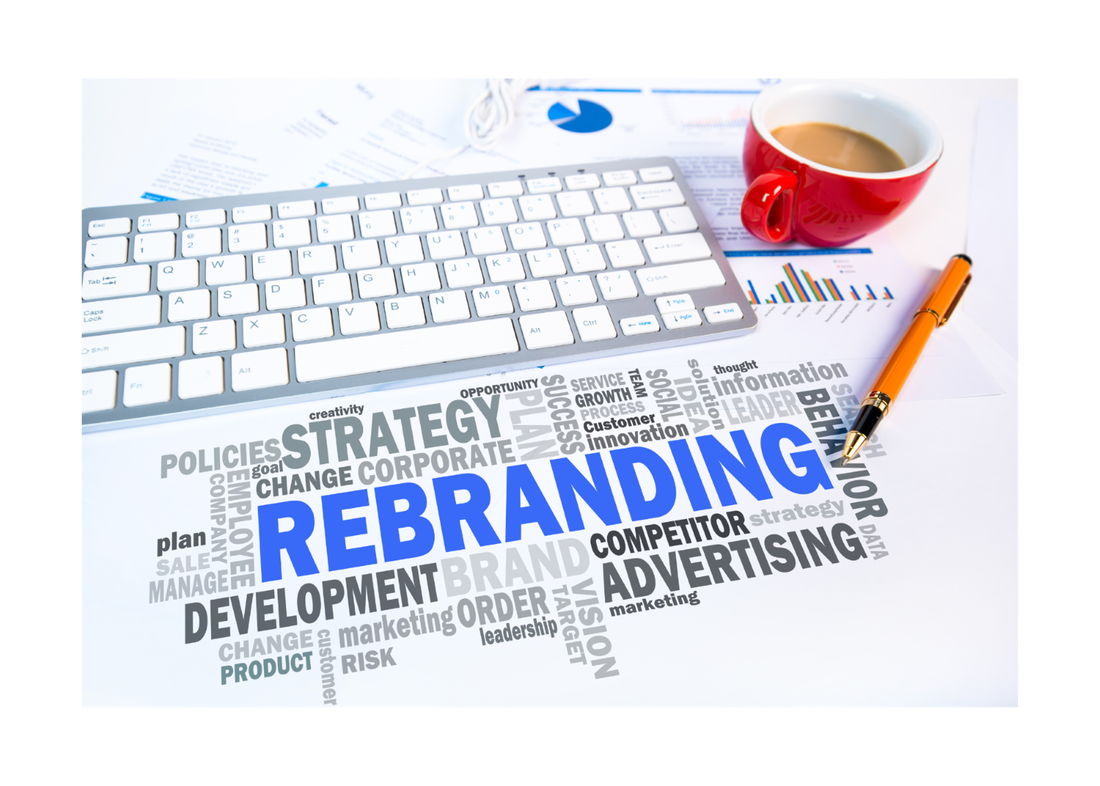Exclusive Access Granted To Our Blog!
|
If you're putting in the work to plan and build a website, you should optimize it to get the best results. The best way to do this is to build it around an effective sales funnel. Planning your site so that it fits into your sales funnel can help you in a number of ways. It can draw new targeted leads to your site where you can start engaging with them, provide content to help visitors make the right purchase decisions, or upsell to your main offer. No matter what your goal, connecting your site with your sales funnel is what makes it happen. How Sales Funnels Work A sales funnel is a marketing concept that refers to a customer's journey with your business, from initial awareness to lifetime loyalty. They enter at the wide end and move toward the final offer. Then, you qualify them with content and offers as they go along. This qualification process helps you separate non-buyers from buyers. You also learn about your leads to better meet their needs. Define Your Sales Funnel Stages A sales funnel has 4 clearly defined stages: Awareness, Interest, Decision, and Action. The lead starts with Awareness. This is where the potential customer first learns about your brand. Then, during the Interest phase, they learn more about your products and services. Next, during the Decision stage, they're ready to buy and are considering their options. The final step is Action when they make a purchase. For example, at the Awareness stage, you may have free content such as articles, blog posts, or videos posted on various websites that bring traffic back to your site. During the Interest and Decision stages, you offer more specific content and small-ticket offers, leading them to the Action stage and the big purchase. Where Your Site Fits into the Sales Funnel Consumers can use your website at the Awareness stage, where they first learn about your brand. You can do this by building a site rich with content offering help with problems your target market faces. You would then use a lead magnet to direct them to other places where you offer more content for the other phases. For example, you might get them to join your email list, webinar, or online group. Another idea is to use your website for the Interest stage. You would use content marketing, publishing information all over the web that leads back to your site. Visitors can learn more about your offers by exploring products and more targeted content. Content Considerations Once you decide how to use your site, you can plan its content. The key is identifying what you want visitors to do. Then create the content and calls to action that would lead them to complete that action. For the Awareness stage, content should be more general, while the Interest stage content would focus on more specific problems. Content for Decision stresses the benefits and uniqueness of your product and leads the person to take action. A Focused Approach Once your website is built, track its performance to know where to make changes. Then, as you interact with leads, you can learn more about your target market and find more ways to meet their needs. Want to learn more about planning and building a website that converts? Get the Website Content Planning Toolkit - DOWNLOAD Whatever your business, your website is the place to connect with your target market and show how your products and services can help them. With this planner, you’ll follow a step-by-step process to help you decide on all the details for a new or revamped site. I’m ready to create content for my website! About The Author Pat Simes is a Business Strategist, blogger and Founder of Innovative Business Solutions and Innovate Academy. She currently resides in the Midwest and is committed to inspiring and empowering entrepreneurs to transform their vision to reality.
0 Comments
Your website is the anchor for all your digital marketing activities. Whether you're using it to sell products or drive traffic to an email list, it plays a vital role. It must offer a good user experience to show visitors where you want them to go. You'll see more conversions if your site is easy and satisfying to use. It's one of the essential parts of website planning. The Importance of User Experience Also known as UX, user experience refers to design meant to enhance your site's experience through better usability and efficiency. This makes it easier for your visitors to engage with the content. The key to user experience is perceived value. No matter how simple or complex a website might be, the user should come away from it feeling like it was a valuable experience. This is what you're aiming for with UX design. Know Your Users How do you create a website that delivers a good user experience and perceived value? First, you must understand your audience well to respond to their needs and provide what they want at your site. Create an ideal user profile that includes demographic and behavioral information. Next, identify the pain points, challenges, or questions that drive them to seek your products and content. Finally, consider what action you want them to take at your site, whether to buy or follow you for further engagement. Content Matters Your content should focus on helping people overcome problems and offering valuable tips. Think about the questions members of your target market have that you can answer through the material you provide. Before people can engage with this content, it needs to be accessible. Ensure any audio or video files can be accessed using all devices your target audience uses. You can improve accessibility by offering content in various formats. For example, add a video with a transcript for those who can't watch it now. Keep Your Site Simple One key to a good user experience is to keep design elements simple. Use a consistent color scheme and fonts so it's visually appealing. Your pages should have a clean, uncluttered layout so visitors can focus on content without getting distracted. Break up text with white space and attractive images. Straightforward Navigation Navigation of your website should be intuitive. People should easily understand how to find the information they want. You can do this by simplifying menus and using clear labels. You should add drop-down menus and sub-menus when they get too cluttered. The linking structure should also be as simple and streamlined as possible. For example, include only essential links and differentiate hyperlinks so users know where to click. A search bar is another essential element of good website navigation, especially if you have a great deal of content. Prominently display the search function and make sure it provides accurate results. How's Your Website's User Experience? How do you know if your website is offering a good user experience? Your visitors will tell you. Monitor their activity on your site, and you'll see what's working and what's not. You can then make the necessary changes to improve even more. Want to learn more about planning a website that achieves your business goals? Get The Website Planning Toolkit For Beginners HERE! About The Author Pat Simes is a Business Strategist, blogger and Founder of Innovative Business Solutions and Innovate Academy. She currently resides in the Midwest and is committed to inspiring and empowering entrepreneurs to transform their vision to reality. Visuals are important to your website because they help convey your brand identity. The visual aspect of a brand is its "hidden language." It dramatically impacts how your business is perceived and enables you to build trust with your audience. Are you working on planning and building your own website? Here's what you need to know about visual identity and branding. What Is Visual Identity? Your brand's visual identity is a collection of elements that present a uniform visual representation. Although you may not realize it, every brand you know has some version. This identity expresses information visually rather than as text. A brand's visual identity includes colors, logos, fonts, layouts, and detailed design elements. However, it's just one part of the overall branding. People often confuse branding with visuals, but it also includes voice, tone, message, content, and other factors. Defining Your Brand's Visual Language The first step is to define your visual language. This means the design features that convey who you are and what you're about. In your customers' minds, these design elements are memorable, and immediately tell them the website is yours. In addition, a consistent visual identity makes you look trustworthy and creates an emotional connection. The elements of your visual identity include your logo, imagery, color scheme, typography, and the layout of your content on the page. To define your visual identity, you can start by looking at design elements you've used before. Then, take what's worked and extend it. For ideas on what features to use, research your target audience, similar businesses in your industry as well as industry trends to get ideas. Consistency Is Key Consistency is the key to good branding. This is why visual branding is about so much more than a logo. All your design features must communicate the same image and be consistent across all marketing channels, profiles, content, and marketing material. The reason it's so essential is that inconsistency can create confusion in the minds of your target audience. They'll feel that something is "off, " which can damage the trust you're building. Be Unique, Be Authentic The point of branding is to create a personality for your business. The unique qualities that your fans love about you set you apart from similar business in your industry and give you memorable character. Your visual identity should help you establish these qualities. Choose a design scheme that's "you," and that sets you apart from others in your niche. Make them memorable so people remember who you are. Tell a Good Story Visual content is very powerful for telling a story. At its most basic, your visual identity communicates ideas. But those ideas must come together to create a story your audience can relate to. Through storytelling, you can create a strong emotional connection. A good story has a character the audience roots for. For example, businesses often create a story where their customer is the main character, and their pain points are the conflict to overcome. A Seamless Experience If your visual identity is consistent with your overall branding strategy, you'll create a seamless customer experience. In addition, you'll create a strong emotional bond with them that builds trust and engagement. Want to learn more about how you can plan your website for maximum results? Download The Website Content Planning Toolkit Ready to create a website that reflects your passion and purpose? Don't let inexperience hold you back. Get your hands on the Website Planning Toolkit for Beginners and embark on a fulfilling journey of web design success! Put The Website Planning Toolkit For Beginners In My Hands! About The Author Pat Simes is a Business Strategist, blogger and Founder of Innovative Business Solutions and Innovate Academy. She currently resides in the Midwest and is committed to inspiring and empowering entrepreneurs to transform their vision to reality. To establish a brand requires a great deal of time and effort, along with some strategic thinking. You certainly don’t want to put in all the work for it not to have good success. Since this is an area of business that’s easily misunderstood, here are the biggest mistakes people make with branding so you can avoid them. Forgetting to Think Strategically Branding is part of your overall business plan, so you need to think strategically about it. It needs to connect to your “why” and your broader business goals. Go back and review the reasons why you’re running this business. Take some time to clarify what you hope to achieve and how your branding will help you do this. Your Brand Is Not Your Logo Many businesses make the huge mistake of thinking a brand is a logo or a set of design features. While consistent design is an important part of branding, what it’s really about is your messaging and the image you’re creating in the minds of your target market. This message tells people how your offerings uniquely benefit them. Being Generic The whole point of your brand is to differentiate your business from others in the market. If you can do this successfully, you can operate as efficiently as other companies that have more resources to spend on marketing and advertising. Focus not only on what you do but what you do differently than others. Assumptions Instead of Facts Don’t make the mistake of building your brand based on assumptions. You think you know how people see your company, but this isn’t good enough. You need to conduct thorough marketing research and base your decisions on facts and feedback from your audience. Inconsistency and Disconnect If your branding is giving people mixed messages, it won’t work to engender trust. The message needs to be consistent wherever you have communication with your audience. The design features, the tone, and the unique benefits of using your products all need to be consistent. Clever But Not Clear While it’s nice to have a message that’s unique and clever, the most important thing is for it to be clear. Branding is a form of communication. People should understand your message easily at a glance. Don’t get so creative that it becomes hard to understand. It’s All About You While you’re talking about your products and services, the real message of your branding should be what using your products does for your customers. Focus on their needs and how their lives will be improved by using your product. Forgetting to Update The needs of your market and the business landscape change over time. Your business might also change, offering a new product line or reaching out to a new segment in the market. When this happens, your branding needs to reflect these changes. Sometimes, you need to assess and update. Do you want to learn more about getting your branding right? Meet Trey Simon, Brand Performance Coach Hey, I’m Trey Simon. Within the past 15 years, I’ve helped hundreds of entrepreneurs turn vague ideas into clear-cut visions which generate leads & sales month after month. It’s finally time for you to get into the driver seat of your business, with our help of leveraging social media platforms, SEO tactics, email marketing automation strategies as well as untouchable creative design. To work with me, schedule a 1-on-1 demo to learn more about developing your brand identity and using the right online marketing tools: HERE About the Author Pat Simes is a Business Strategist, blogger and Founder of Innovative Business Solutions and Innovate Academy. She currently resides in the Midwest and is committed to inspiring and empowering entrepreneurs to transform their vision to reality. Storytelling is highly effective in any kind of business. Stories capture the attention of your audience and make your business relatable. This is why they’re so useful in rebranding. An essential part of any rebranding strategy is to develop and tell a good brand story.
Why We Love Storytelling Why is storytelling so important in branding? Your brand needs to be memorable and relatable. It needs to impart your company’s personality and emphasize how you’re unique. These are all things that can be done through a good story. In fact, some people are loyal to brands solely because of their story. You might love a local coffee shop that stands up against the big nation-wide chains, or a healthy organic restaurant with a mission to offer ethical and environmentally-friendly food. These brands are strong because of stories that emphasize the values they share with their customers. Stories work especially well in the digital age where people are flooded with advertising and marketing messages all day long. Your story helps your brand cut through the noise. What’s Your Story? Your brand story is the genesis story of your company. It tells why you founded it and how you grew it to its current state. It might include things like: How you grew from humble beginnings and overcame overwhelming odds How you stuck with your principles when selling out would’ve been easier How you solved a problem and then decided to offer this solution to the world at large How you want to change the world and why you’re trying to do it Like any good story, yours starts with a “why.” It has ups and downs, plot twists and drama, and a vision for the future, all centered around your company and its brand. How to Discover Your Story You’re not starting from scratch with your brand story. It’s already there, you just need to figure out how to tell it. Start by identifying your “why.” Why does your company exist? What is your mission? What motivates you to do what you do? How do you contribute? Brainstorm several story ideas. Write a few different versions of the basic story that emphasize different aspects of your business. If you’ve already clarified what your unique value is, write a story that explains this along the way. You may also write a few different versions to appeal to different segments of your market. Once you’ve chosen the right one, simplify it so it gets straight to the point. Give it the “so what?” test. When people are reading your story, they’re thinking, “so what?” In other words, “What’s in it for me?” It should be about your company, but it should also tell the reader what you do for them. A good brand story is straightforward and easy to understand. Once you have it finished, decide when and where you’ll use it, and create shorter and longer versions. Integrate it into your branding and it will drive home the unique value you offer. Do you want to learn more about branding your business the right way? Meet Trey Simon, Brand Performance Coach Hey, I’m Trey Simon. Within the past 15 years, I’ve helped hundreds of entrepreneurs turn vague ideas into clear-cut visions which generate leads & sales month after month. It’s finally time for you to get into the driver seat of your business, with our help of leveraging social media platforms, SEO tactics, email marketing automation strategies as well as untouchable creative design. To work with me, schedule a 1-on-1 demo to learn more about developing your brand identity and using the right online marketing tools: HERE About the Author Pat Simes is a Business Strategist, blogger and Founder of Innovative Business Solutions and Innovate Academy. She currently resides in the Midwest and is committed to inspiring and empowering entrepreneurs to transform their vision to reality. Your brand is a major source of value for your company. With a strong brand identity, you can do more with fewer resources to reach your audience by creating an image in their minds of how you uniquely meet their needs. But branding is about much more than just logos. Here are the 5 key elements of a strong brand identity.
A Purpose Your branding tells people your reason for doing what you do. It explains how you want to change the world for the better. At a glance, people can understand the values that are at the core of your philosophy and products. To start creating your brand identity, spend some time thinking about your “why.” Why does your business exist? What is it you hope to change in the world to make it a better place? What solution does your business bring? Market Position Your brand identity tells people what position you occupy in the market. It says not only what you do, but how you do it uniquely from anyone else: “We’re the ones who ____.” In a market full of other businesses show how you are different and how. Part of successful branding is to understand your industry and the unique place you fill in the market. It involves getting in touch with your natural strengths so you can play to them. Your Company’s Personality Your company should have a likeable and relatable personality that resonates with your audience. Your brand communicates this personality to your audience, speaking to them in their voice and tone. The personality also makes it memorable. What is your brand’s personality? You can figure this out through research and natural strengths, but also by asking your customers why they prefer buying from you and not someone else. Consistent Design Elements Although branding is more than just logos and colors, design elements are important. They work on a subtle level. Wherever your audience member encounters your brand, they see the same design features, which tells them it’s you and shows that you’re consistent. Design elements includes name, logo, colors, banners, fonts, and so on. Your Audience Your content is targeted to a specific audience, talking about their problems and addressing their needs. For a strong brand identity, you need to know your audience well and focus on them, not you or your products and services. Your branding discusses your offerings in terms of the unique benefits to users. How to Create a Strong Brand Identity Branding isn’t second nature to most companies. It requires some planning and strategic thinking to develop a strong brand identity. Creating a strong brand starts with clarifying your business goals and your strategy for achieving them. Your brand needs to be in line with your core values and unique value proposition. The next step is to research your audience and your industry, so you can understand what position you occupy in the market. A detailed customer profile helps you understand your target market so you can address their needs and speak their language. Once you’ve clarified the fundamentals of your business and gained a thorough understanding of the marketplace, you’re ready to create a branding message and unique value proposition. With this in hand, you’re ready to go about implementing your brand and monitoring your results. Do you want to learn more about creating a strong brand identity? Meet Trey Simon, Brand Performance Coach Hey, I’m Trey Simon. Within the past 15 years, I’ve helped hundreds of entrepreneurs turn vague ideas into clear-cut visions which generate leads & sales month after month. It’s finally time for you to get into the driver seat of your business, with our help of leveraging social media platforms, SEO tactics, email marketing automation strategies as well as untouchable creative design. To work with me, schedule a 1-on-1 demo to learn more about developing your brand identity and using the right online marketing tools: HERE About the Author Pat Simes is a Business Strategist, blogger and Founder of Innovative Business Solutions and Innovate Academy. She currently resides in the Midwest and is committed to inspiring and empowering entrepreneurs to transform their vision to reality. Branding has an enormous impact on every aspect of your business. Whether you’re just getting started creating a brand identity or you’re in the process of rebranding because of changes in the market, you need to spend some time clarifying the messaging you want to create and deciding how to implement it. Here are the 6 steps for creating a strong brand. Create a Branding Strategy Your branding strategy clarifies which direction your branding should go. It means creating your messaging with an eye toward the future of your business. This step in the process starts with identifying your business goals and how your brand fits into them. How does it help you to achieve them? Research Your Market Before you start making any major decisions, you need to understand where your business fits into the market and the position it plays in the minds of your audience. Research needs to be conducted in a few key areas. Your Target Market. You need to create a detailed customer profile and identify the needs that your offerings fulfill for your audience. You also need to understand how your audience sees you, since “brand” is essentially an image that exists in their mind. Your Products and Services. Branding revolves around a promise you make to your audience. What is your promise? What need does your offering speak to and how does it uniquely solve the problems of your target market? Your Industry. Research the market and see what is happening in your industry in order to clarify your unique position in relation to others. People will love your brand because of its uniqueness. Create Your Messaging and Unique Value Proposition Now that you know the market and your position in it, create a message that explains to your audience how you uniquely fulfill their needs. This message in some form will be conveyed through everything you do and at every touchpoint with your audience. This message should focus on the customer and the benefits your offering provides them. How does using your products make the customer’s life better? It should emphasize what sets you apart from other, similar businesses. Create a Branding Plan Now, choose the personality, tone, and design elements that will help to convey this message to your audience. Your planning should include where you will communicate with your market and what content you will offer them. For branding to work, everything should be consistent and in harmony with the message you outlined in the previous step. Implement Your Brand Identity The process of branding is never truly finished. Once you implement it, you’ll need to monitor and keep gathering feedback from your market to make sure the message is hitting home. From time to time, you’ll also need to consider rebranding. Companies re-brand when there are significant changes in the market, changes in their company, or a new segment of the market they need to target. In order to keep up to date with these changes, they have to tweak or overhaul their branding so that it will achieve their new goals. Do you want to learn more about developing the right brand identity? Meet Trey Simon, Brand Performance Coach Hey, I’m Trey Simon. Within the past 15 years, I’ve helped hundreds of entrepreneurs turn vague ideas into clear-cut visions which generate leads & sales month after month. It’s finally time for you to get into the driver seat of your business, with our help of leveraging social media platforms, SEO tactics, email marketing automation strategies as well as untouchable creative design. To work with me, schedule a 1-on-1 demo to learn more about developing your brand identity and using the right online marketing tools: HERE Is the actual experience you deliver your customers in-line with the experience you're trying to deliver? There's only one sure way to know and that's to conduct research. You need real, objective data from your customers on which to base decisions. Your own assumptions aren't enough. Here are 8 ways to gather the research you need. Scour Social Media Search your name as a keyword on popular social media sites like Facebook and Twitter. Look for positive and negative comments about your brand. These comments will tell you whether or not you're living up to customer expectations or not. Read Reviews and Ratings Find your listing on review and rating sites. Read reviews and see what feedback customers wrote about their experience with your company. For negative reviews, reply and ask for clarity or ways you can further help them. Ask Directly Come right out and ask. Offer a comment card or surveys. Offer an incentive such as a discount or freebie as enticement. The best time to ask for feedback is after the customer has bought and used the product. Make seeking feedback part of your follow-up process. Carry out Focus Groups While it requires a bit more investment of time and resources, focus groups are a great way to learn about the experience directly from customers. Invite select customers and lead a discussion about their experience dealing with your company. Website Analytics Website analytics offer an indirect way of evaluating the customer experience. If a large number of visitors come to your site but disappear without signing up, buying, or otherwise engaging, this could mean that there's a disconnect in the experience there. Communications Monitoring Monitor communications between employees and customers to see where there might be problems. This can also help you identify areas where employee training is lacking or where ongoing training is necessary. Employee Focus Groups It may also be useful to hold employee focus groups. In these groups, you can talk about your experiences with customers. Employees can talk about what they feel were successes or failures in the customer experience based on customer feedback or behavior. Encourage Interaction Always look for opportunities to interact naturally with your customers. The more you have interactions with them, the more likely you are to glean insights on how they view the experience with your business. This research should be ongoing. No customer experience is perfect and all can use some fine-tuning. Through the objective data you obtain during this research, you can identify areas of weakness for improvement. About The Author Pat Simes is a Business Strategist, blogger and Founder of Innovative Business Solutions and Innovate Academy. She currently resides in the Midwest and is committed to inspiring and empowering entrepreneurs to transform their vision to reality. The journey a customer takes with your company is very emotional. Emotion plays a key role in the customer experience and you should take it into consideration when mapping and planning your customer experience. Why Emotions Are Important The reason emotion is important is that it's a vital part of decision-making. We live in a complex world with many things to consider. In order to make a purchase decision rationally, you would need to carry out a detailed cost-benefit analysis of everything. Most people don't do this and instead make decisions based on emotions, which provide a kind of shortcut. Often, a purchase decision is made because it just feels right. Emotions also play a key role in motivation. How does a customer know when the time is right to finally make a purchase? For most of us, what drives us to act is the emotion we feel about a purchase decision. Emotions Come from the Customer Experience When making purchase decisions, the emotions used are based on everything that has transpired between the customer and the business. In other words, these emotions are shaped by the total customer experience. In other words, the sum total of how a customer feels about your business, which is a direct result of what happens at each touch point, is very important. Emotions Also Create the Customer Experience The fulfilment of these emotional expectations is also important for the customer experience. The customer expects to feel a certain way at different stages of the journey. After purchase, for example, they want to feel fulfilled and confident that they made the right purchase. Subtle changes can have an emotional impact on your customers. In Paco Underhill's book "Why We Buy," there is a case where the feel of the carpet in a department store affected customer buying behavior. Small things like this can work on a subconscious level. Different Emotions for Different People Which specific emotions drive decision making in your customers varies from person to person, or in this case, from target market to target market. Exactly which emotions are most critical depends on many things, including the type of products or services you're offering. The need for peace of mind is important for people buying software security packages. Meanwhile, feelings of excitement and self-expression may be more important for car buyers. The key is to conduct research in order to discover which emotions are important in the experience for your customers. Throughout the experience you offer your customers, you should look for these emotions and identify them. This is part of maximizing the experience. About The Author Pat Simes is a Business Strategist, blogger and Founder of Innovative Business Solutions and Innovate Academy. She currently resides in the Midwest and is committed to inspiring and empowering entrepreneurs to transform their vision to reality. The best way to think about the customer experience is as a story. This is how your customer experiences it. The story starts with their first contact with your brand, whether directly or indirectly. The plot thickens as they learn about your products or services and begin interacting with you. The plot takes a major turn when the customer decides to buy something from you, and the story continues as the customer's relationship with your business moves forward to future purchases. Think of the Customer Experience as a Story When we're evaluating the efficacy of our methods, we tend to look at data. This data can come to us in the form of statistics like sales data or web analytics, or from customers themselves in the form of survey results. But this data can't fully convey the customer experience as the customer lives it. This data isn't useful because it doesn't convey the totality of the customer experience, and that's exactly what it is – a totality. Rather, this data gives you only the specific data it can, such as how much web traffic you're getting or whether or not your customers think your response time is fast enough. If you're lucky, you'll get a few sentences of feedback, but even this isn't enough. The customer experiences their journey with your company as a story. Like a novel or movie, each scene plays a part in the overall story. In order to understand what's working well or what's going wrong with your customer experience, you need to know this entire story and how all of the small parts fit into it. Know Your Customer's Story The best way to learn your customer's story with your brand is to put yourself in your customer's shoes and write out this story. We do this through mapping the customer experience. A customer experience map starts with the first contact you have with your customer and works its way through all of the story's "scenes," which are the individual touch points you have with the customer. A customer experience map is something like an infographic which shows the entire story. You can take in the big picture at a glance, but it also shows you all of the relationships between the different parts. You can more easily see where problems might occur and areas where you can make improvements in order to maximize the experience. There are many different ways to approach mapping the customer experience, but it should always be in story form. You should understand your company's customer experience through the customer's eyes. About The Author Pat Simes is a Business Strategist, blogger and Founder of Innovative Business Solutions and Innovate Academy. She currently resides in the Midwest and is committed to inspiring and empowering entrepreneurs to transform their vision to reality. |
AuthorPat Simes Archives
July 2024
Categories
All
|

















 RSS Feed
RSS Feed